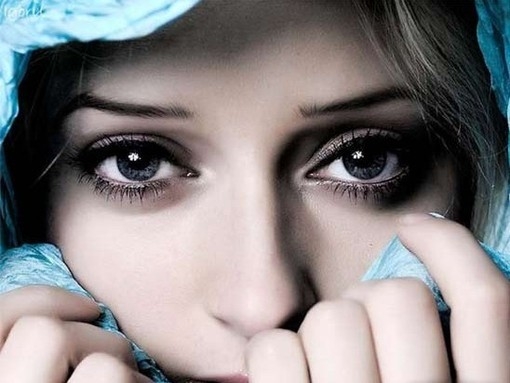Aging is not for the squeamish: skin sags, joints ache and hearing might start to go. And many seniors have trouble sleeping, which can lead to other health problems. Now research shows that a subtle consequence of aging may be responsible for the insomnia: the eye's lenses turn yellow.
衰老是不挑人的:皮肤松弛,关节疼痛,听力下降。许多老年人还出现了睡眠问题,这些睡眠问题能导致其他健康问题。现有研究表明,一个细微的衰老后果可能是导致失眠的罪魁祸首——眼球的晶状体变黄。
 The yellowing can take decades, like a page slowly turning color in an old book. But what does this color change have to do with sleep? The yellowed lens allows less blue light into the retina. And those wavelengths of light play a key role in regulating our circadian rhythm and sleep schedule.
The yellowing can take decades, like a page slowly turning color in an old book. But what does this color change have to do with sleep? The yellowed lens allows less blue light into the retina. And those wavelengths of light play a key role in regulating our circadian rhythm and sleep schedule.
变黄的过程会持续几十年,就像是一本旧书的书页慢慢地泛黄。但这种颜色的变化与睡眠有什么关系呢?变黄的晶状体很难将蓝色光波带入视网膜,而那些光的波长在调节我们的昼夜节律和睡眠规律中起着至关重要的作用。
The new study looked at 970 older adults, and found that those with the yellowest lenses also tended to report the most sleep disturbances. The findings are in the journal Sleep.
这项新的研究对970名老年人进行了观察,发现那些眼球晶状体最黄的老年人也正是报告说受到睡眠困扰最为严重的人群。这些研究结果发表在《睡眠》期刊上。
Cataract surgery replaces the aging lens with an artificial one, which can let in broader ranges of light—and has been reported to improved sleep. It may be counterintuitive, but getting better shuteye in the golden years might mean letting more light in.
白内障手术用人工晶状体替代老化的晶状体,可以让更多的光波射入眼球,已有报道表明可以改善睡眠。这样做也许有悖常理,但若能在退休后的美好时光里可以获得更优质的睡眠,或许正意味着应该让更多的光照射进来。
来源:可可英语 //m.moreplr.com/hangye/201202/172265.shtml The yellowing can take decades, like a page slowly turning color in an old book. But what does this color change have to do with sleep? The yellowed lens allows less blue light into the retina. And those wavelengths of light play a key role in regulating our circadian rhythm and sleep schedule.
The yellowing can take decades, like a page slowly turning color in an old book. But what does this color change have to do with sleep? The yellowed lens allows less blue light into the retina. And those wavelengths of light play a key role in regulating our circadian rhythm and sleep schedule.











